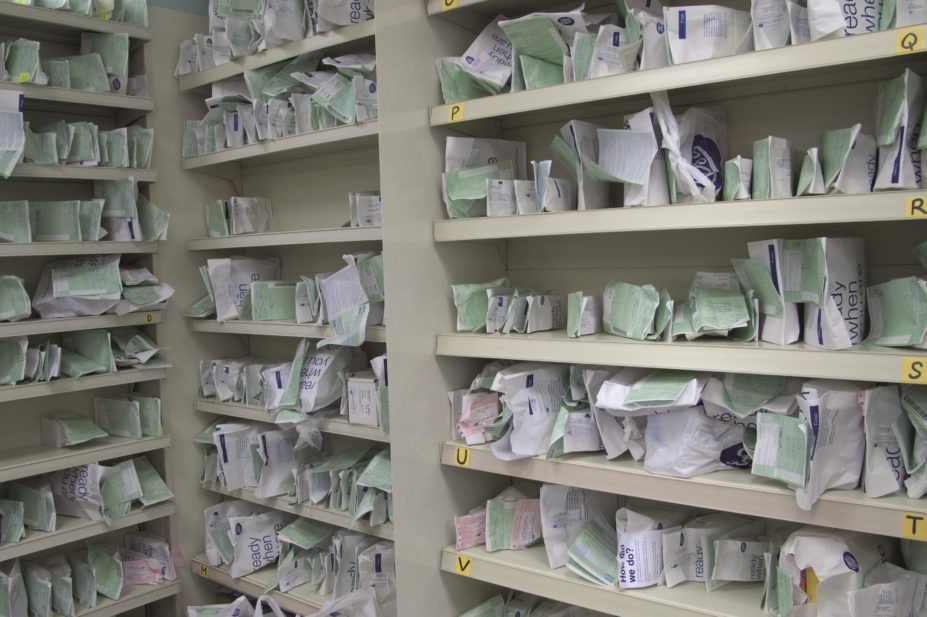
David Pearson / Alamy Stock Photo
The number and overall cost of prescriptions dispensed in the community has risen for another consecutive year in England, with costs rising at a higher rate than volume.
Data from the Health & Social Care Information Centre show that in 2015, 1.1 billion prescription items were dispensed in the community in England, an increase of 1.8% from 2014. The total cost of prescriptions rose by 4.7%, from £8.9bn in 2014 to £9.3bn in 2015.
The most commonly prescribed drugs were cardiovascular medicines, totalling 317 million prescriptions at a net ingredient cost of £1.1bn. But the greatest expenditure was on central nervous system drugs, amounting to £1.9bn from 201 million prescriptions.
The figures show that the greatest expenditure on a single drug was for fluticasone propionate inhalers at £376.0m. Beclometasone dipropionate and budesonide also featured among the most costly medicines. Treatments for diabetes, including metformin and insulin, were also big contributors to expenditure, as was the cost of glucose blood testing reagents at £180.3m.
Simvastatin was the most commonly prescribed drug, with a total of 34.4 million dispensed. However, this was a decrease from the previous year when 37.8 million items were dispensed. At the same time, prescriptions for atorvastatin increased from 22.2 million to 27.2 million, with the amount spent on this drug rising from £43.1m to £53.8m.
Among the other most frequently prescribed drugs were the proton pump inhibitors omeprazole and lansoprazole, painkillers including paracetamol, co-codamol and aspirin, and levothyroxine.
The data include all items dispensed in the community by doctors, community pharmacists and appliance contractors.
NHS Scotland recently released figures on community prescribing for the first three quarters of 2015–2016. They showed that over the nine-month period, 77.2 million items were dispensed, an increase of 1.1% on the same period in 2014–2015. The gross ingredient cost was also 8.7% higher than the previous year, which the Information Services Division says was a result of some high-cost treatment regimens moving from being dispensed in hospitals to the primary care setting.


